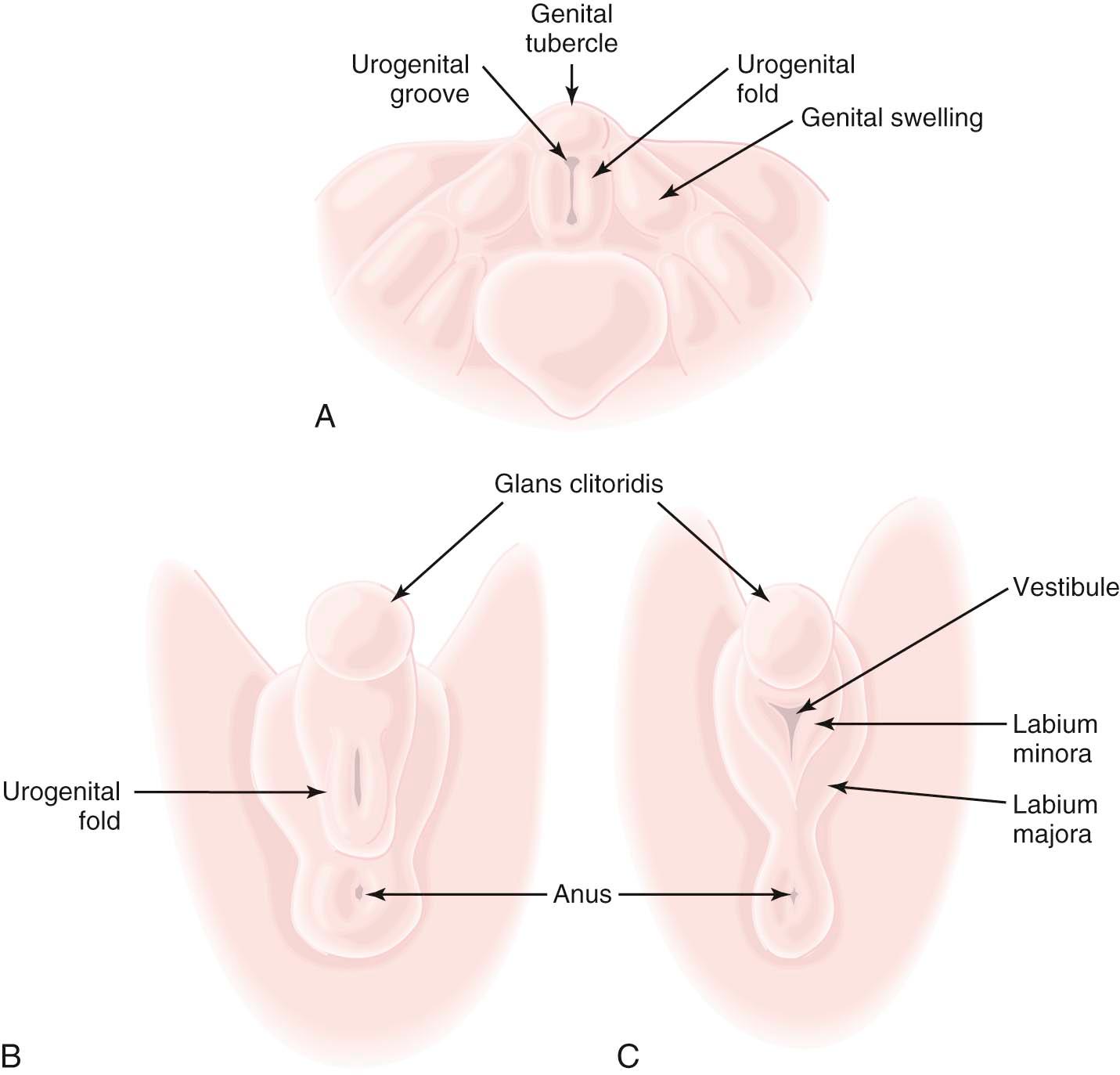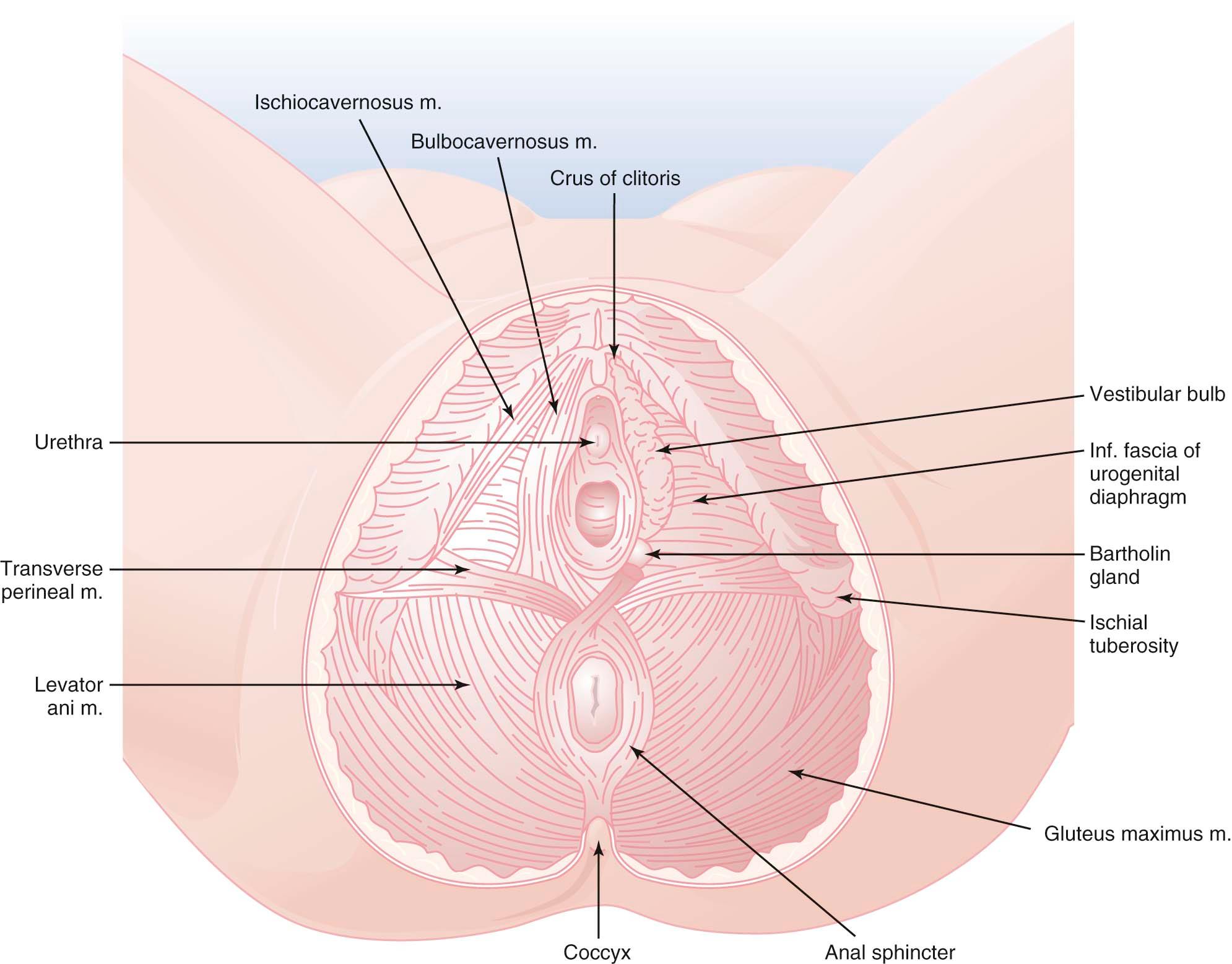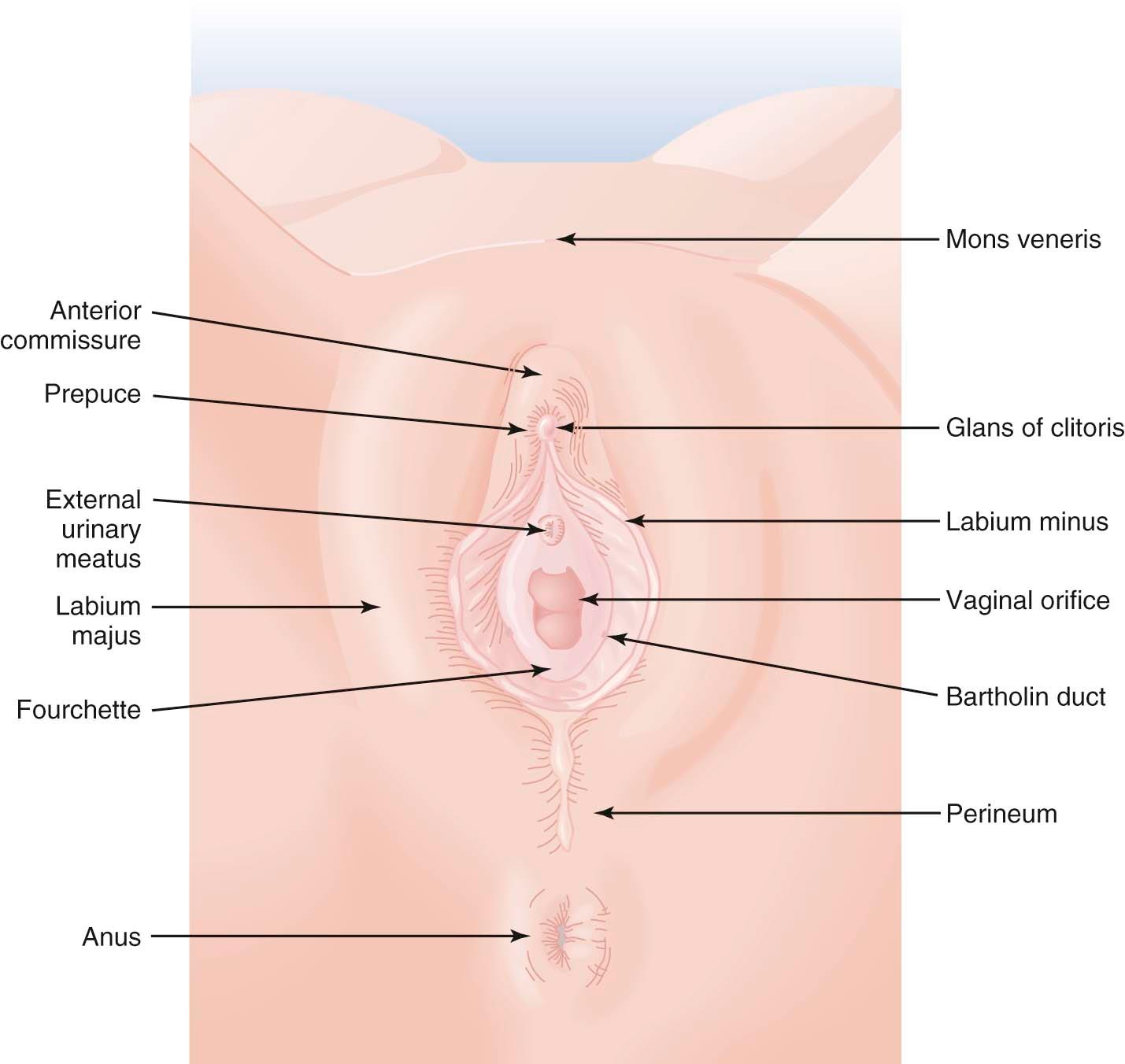Physical Address
304 North Cardinal St.
Dorchester Center, MA 02124
The upper vagina, cervix, uterus, and fallopian tubes are formed from the paramesonephric (müllerian) ducts. The absence of the Y chromosome leads to the development of the müllerian (female) system with virtual total regression of the mesonephric (wolffian) or male system. With the Y chromosome present, a testis is formed and müllerian-inhibiting substance is produced, creating the reverse situation.
The vagina is a flattened tube extending from the hymenal ring at the vaginal introitus up to the fornices that surround the uterine cervix. The vaginal epithelium, which is stratified squamous in type, and not mucosal, is nonkeratinized and devoid of mucous glands and hair follicles.
The blood supply to the ovaries is provided by the ovarian arteries, which arise from the abdominal aorta immediately below the renal arteries. The venous drainage of each ovary differs in that the right ovary drains directly into the inferior vena cava whereas the left ovary drains into the left renal vein.
At the time of pelvic examination when a woman is in the dorsal-lithotomy position, the uterus may be palpated to be tilted forward in an anterior or anteverted position, in a midline position, or tilted backward in a posterior or retroverted position. The top or corpus of the uterus may also be folded forward (anteflexed) or backward (retroflexed). Most of the time this represents normal anatomic variation.
Gynecologic surgeons use several types of skin incisions for the performance of “open” surgical procedures. The most common is the low transverse or Pfannenstiel incision. When more exposure is needed than anticipated, the skin incision can be extended and the rectus abdominis muscles divided with diathermy. This is called a Maylard incision. For most open operations for cancer, vertical incisions are desirable, because they can be readily extended to allow access to the upper abdomen.
Other chapters in this book deal with the disruptive deviations from normal female anatomy and physiology, whether they be congenital, functional, traumatic, inflammatory, neoplastic, or even iatrogenic. As the etiology and pathogenesis of clinical problems are considered in these other chapters, each should be studied in the context of normal anatomy, development, and physiology. A physician cannot practice obstetrics and gynecology effectively without understanding the physiologic processes that transpire in a woman's life as she passes through infancy, adolescence, reproductive maturity, and the climacteric. As the various clinical problems are addressed, it is important to consider those anatomic, developmental, and physiologic changes that normally take place at key points in a woman's life cycle.
This chapter presents the normal anatomy of the female reproductive tract along with its embryologic development and the anatomy of some important surrounding structures. Applied anatomic issues, such as the normal variation in uterine position and the types of surgical incisions used by gynecologic surgeons, are also covered.
Before the seventh week of development, the appearance of the external genital area is the same in males and females. Elongation of the genital tubercle into a phallus with a clearly defined terminal glans portion is noted in the 7th week, and gross inspection at this time may lead to faulty sexual identification. Ventrally and caudally, the urogenital membrane, made up of both endodermal and ectodermal cells, further differentiates into the genital folds laterally and the urogenital folds medially. The lateral genital folds develop into the labia majora, whereas the urogenital folds develop subsequently into the labia minora and prepuce of the clitoris.
The external genitalia of the fetus are readily distinguishable as female at approximately 12 weeks ( Figure 3-1 ). In the male, the urethral ostium is located conspicuously on the elongated phallus by this time and is smaller, because of urogenital fold fusion dorsally, which produces a prominent raphe from the anus to the urethral ostium. In the female, the hymen is usually perforated by the time delivery occurs.

The perineum represents the inferior boundary of the pelvis. It is bounded superiorly by the levator ani muscles and inferiorly by the skin between the thighs ( Figure 3-2 ). Anteriorly, the perineum extends to the symphysis pubis and the inferior borders of the pubic bones. Posteriorly, it is limited by the ischial tuberosities, the sacrotuberous ligaments, and the coccyx. The superficial and deep transverse perineal muscles cross the pelvic outlet between the two ischial tuberosities and come together at the perineal body. They divide the space into the urogenital triangle anteriorly and the anal triangle posteriorly.

The urogenital diaphragm is a fibromuscular sheet that stretches across the pubic arch. It is pierced by the vagina, the urethra, the artery of the bulb, the internal pudendal vessels, and the dorsal nerve of the clitoris. Its inferior surface is covered by the crura of the clitoris, the vestibular bulbs, the greater vestibular (Bartholin) glands, and the superficial perineal muscles. The Bartholin glands are situated just posterior to the vestibular bulbs, and their ducts empty into the introitus just below the labia minora. They are often the site of gonococcal infections and painful abscesses.
The external genitalia are referred to collectively as the vulva. As shown in Figure 3-3 , the vulva includes the mons veneris, labia majora, labia minora, clitoris, vulvovaginal (Bartholin) glands, fourchette, and perineum. The most prominent features of the vulva, the labia majora, are large, hair-covered folds of skin that contain sebaceous glands and subcutaneous fat and lie on either side of the introitus. The labia minora lie medially and contain no hair but have a rich supply of venous sinuses, sebaceous glands, and nerves. The labia minora may vary from scarcely noticeable structures to leaf-like flaps measuring up to 3 cm in length. Anteriorly, each splits into two folds. The posterior pair of folds attach to the inferior surface of the clitoris, at which point they unite to form the frenulum of the clitoris. The anterior pair are united in a hoodlike configuration over the clitoris, forming the prepuce. Posteriorly, the labia minora may extend almost to the fourchette.

The clitoris lies just in front of the urethra and consists of the glans, the body, and the crura. Only the glans clitoris is visible externally. The body, composed of a pair of corpora cavernosa, extends superiorly for a distance of several centimeters and divides into two crura, which are attached to the undersurface of either pubic ramus. Each crus is covered by the corresponding ischiocavernosus muscle. Each vestibular bulb (equivalent to the corpus spongiosum of the penis) extends posteriorly from the glans on either side of the lower vagina. Each bulb is attached to the inferior surface of the perineal membrane and covered by the bulbocavernosus muscle. These muscles aid in constricting the venous supply to the erectile vestibular bulbs and also act as the sphincter vaginae.
As the labia minora are spread, the vaginal introitus, guarded by the hymenal ring, is seen. Usually, the hymen is represented only by a circle of carunculae myrtiformes around the vaginal introitus. The hymen may take many forms, however, such as a cribriform plate with many small openings or a completely imperforate diaphragm.
The vestibule of the vagina is that portion of the introitus extending inferiorly from the hymenal ring between the labia minora. The fourchette represents the posterior portion of the vestibule just above the perineal body. Most of the vulva is innervated by the branches of the pudendal nerve. Anterior to the urethra, the vulva is innervated by the ilioinguinal and genitofemoral nerves. This area is not anesthetized adequately by a pudendal block, and repair of paraurethral tears should be supplemented by additional subcutaneous anesthesia.
Become a Clinical Tree membership for Full access and enjoy Unlimited articles
If you are a member. Log in here